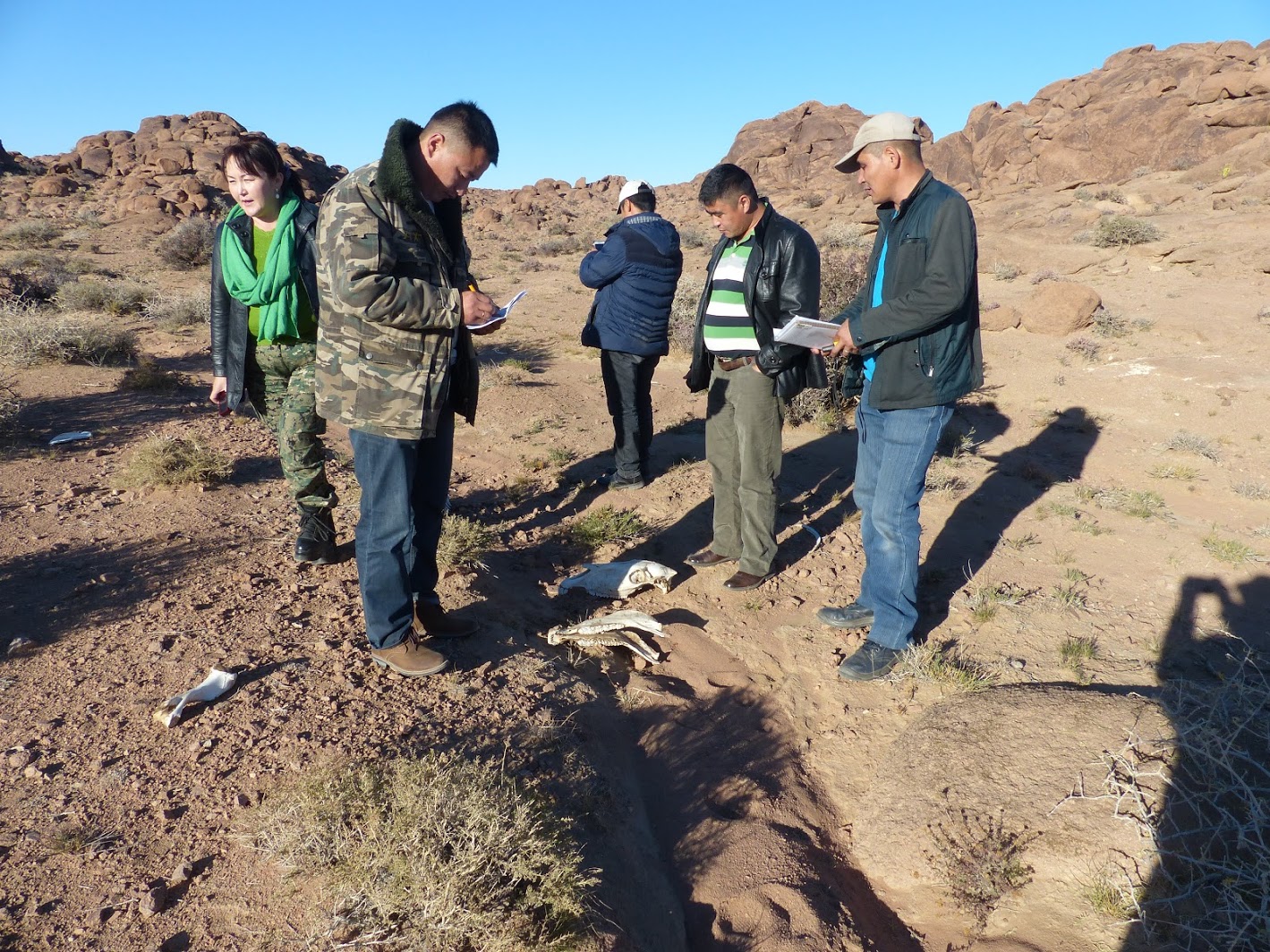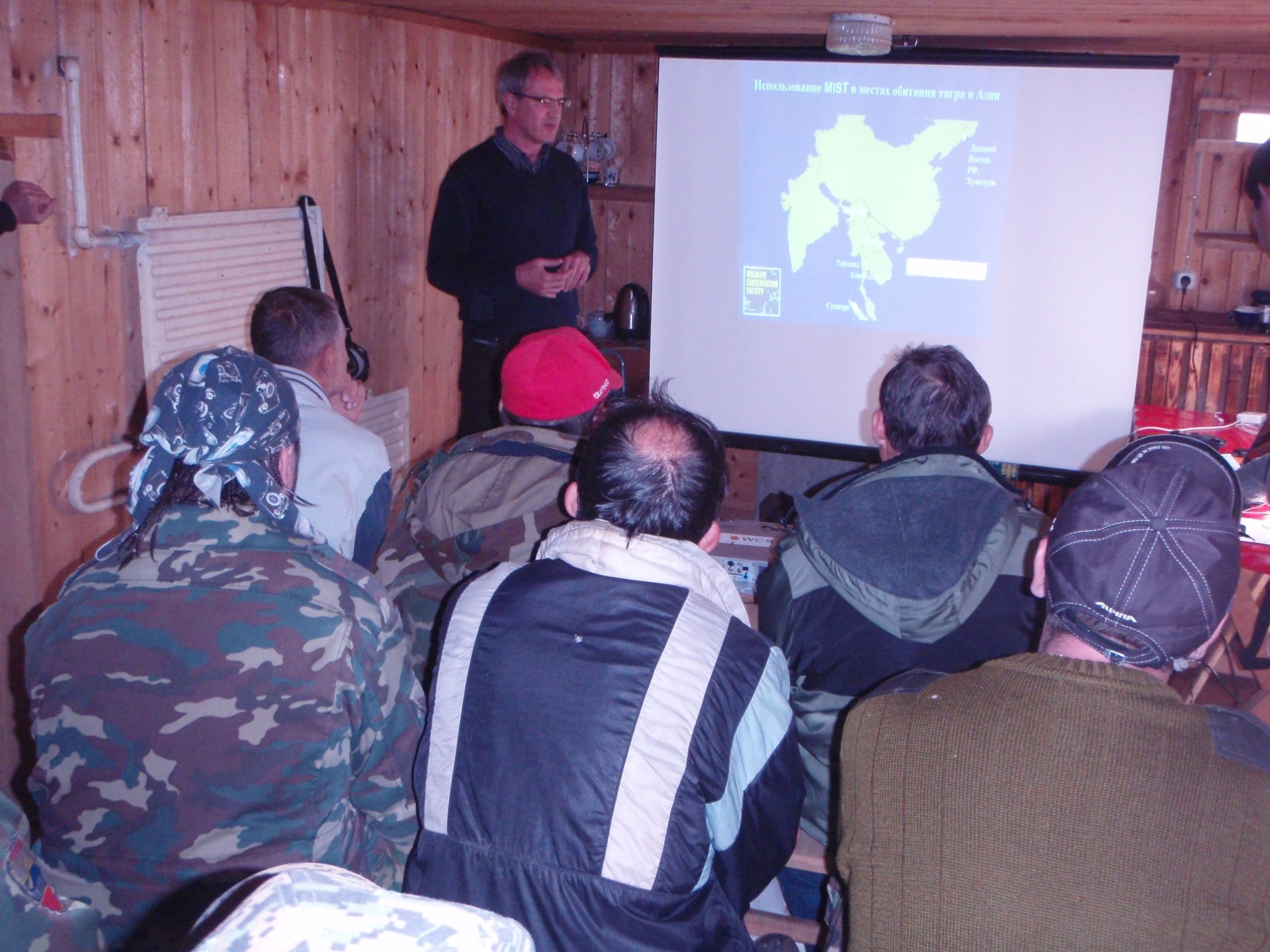The Snow Leopard Network is delighted to partner with WCS in offering this training Module. Module 9 introduces participants to practical tools for monitoring wildlife and potential threats across snow leopard habitat. Do join us!
About the module
The Spatial Monitoring and Reporting Tool (SMART), has rapidly become the global standard for protection monitoring and management. SMART is currently used in over 900 conservation areas and 60 countries worldwide. The use of SMART is however still limited across the snow leopard range. The “SMART Approach”, uses patrol monitoring data in management cycles that are aimed at step-by-step improvements in patrol quality. When applied properly, this approach can produce substantial improvements in wildlife protection. SMART monitoring makes it possible to measure trends in wildlife populations, patrol effort, poaching pressures, and other threats, and assess whether protection capacity is sufficient. SMART can help address threats to snow leopards, their prey species and their habitat and secure their survival. It is also possible to use advanced features of SMART to design surveys and sampling regimes for ungulate prey surveys.
The main goal of the module is to provide advanced understanding of the functionality of the Spatial Monitoring and Reporting Tool (SMART) in the context of adaptive management and the snow leopard’s range. Participants who complete the short course will:
-
-
- Learn the basic features of the SMART tool to support protected area activities.
- Know the philosophy of adaptive patrol management, the role that SMART plays in facilitating this, how to use SMART as a tool to support protection efforts
- The process of implementing SMART at a site (trainings, meetings, logistics, and technical support)
- How to adapt the tool to the particular needs of your site.
- How to design surveys to collect data at your site
-
![]()
In summary participants will be exposed to the following practical tools:
-
-
- How to get started with SMART at a new site, and to sustain its use as a management tool
- Overview of SMART use and navigation, design of the data model and data base
- Overview of SMART mobile app and recommended devices
- Practical use of SMART mobile-equipped smartphones for field data recording, uploading of configured models and downloading of patrol data
- Basic analysis with queries and summaries, an overview of reporting
- Introduction to use of SMART as a tool for designing surveys and data sampling
-
Dates of sessions
- March 4th, 11th, 18th, 25th 2021
- Thursday 17:30 – 19:30 Bishkek time.
Draft Outline Schedule
- Session 1: Overview of the Spatial Monitoring and Reporting Tool (SMART) and how it works (4 March)
- Session 2: Getting started with SMART and making it sustainable at your conservation site (11 March)****
- Session 3: SMART tools for data collection (18 March)
- Session 4: SMART ecological records for designing surveys (25 March)
****please note Session 2 will also be offered in Russian on March 12th and more information will soon be available
Meet the training team
Samantha Strindberg Ph.D

Samantha Strindberg is a Conservation Scientist and Wildlife Statistician in the Global Conservation Program of the Wildlife Conservation Society (WCS), a US-based NGO. She provides statistical design and analysis assistance to WCS staff based at terrestrial and marine field sites world-wide. She focuses in particular, on the appropriate application of continually evolving specialized techniques for wildlife surveys, and on conducting statistical analyses to investigate ecological and human-influenced relationships relevant to conservation management.
Samantha also contributes to strategic conservation planning, by developing conceptual models and theories of change, and by designing monitoring programs to assess the effectiveness of conservation activities. She provides training workshops on wildlife survey methods and the design of monitoring programs most recently in conjunction with the SMART Ecological Records software. She is a member of the Committee of Scientific Advisors on Marine Mammals with the Marine Mammal Commission.
Samantha holds a Ph.D. in Statistics focused on Wildlife Population Assessment from the University of St Andrews, Scotland. While there, she was part of the Research Unit for Wildlife Population Assessment (RUWPA), and also worked on projects including the mapping and survey design component of the Distance software, the International Whaling Commission’s Database-Estimation Software System, as well as data entry software for cetacean surveys. Samantha originally majored in Computer Science and Applied Mathematics at the University of Cape Town, South Africa. During this time, she also worked on fisheries and marine mammal population assessments. She has published four book chapters on distance sampling and a diverse set of peer-reviewed papers covering topics such as abundance estimation, spatial distribution, temporal trends, survey techniques, and evidence-based conservation.
Michiel Hotte
 Michiel has a Master’s Degree in Business Economics and Management from the University of Amsterdam and has worked in The Netherlands as a management consultant for KMPG and for Deloitte & Touche. Since 1996, he has been involved in conservation in the Russian Far East, from 1997, as Director of Tigris Foundation (a Dutch NGO for the protection of Amur leopards and tigers that he established) and between 2003 and 2008, as a staff member of the Zoological Society of London. Since 2006, he has been driving efforts of the Wildlife Conservation Society’s Russia Program to design and introduce SMART systems (and before that MIST) for monitoring and adaptive management of patrol efforts. WCS has assisted with introducing SMART to seven federal-level protected areas in Amur tiger habitat in the Russian Far East and to one wildlife management agency operating outside protected areas.
Michiel has a Master’s Degree in Business Economics and Management from the University of Amsterdam and has worked in The Netherlands as a management consultant for KMPG and for Deloitte & Touche. Since 1996, he has been involved in conservation in the Russian Far East, from 1997, as Director of Tigris Foundation (a Dutch NGO for the protection of Amur leopards and tigers that he established) and between 2003 and 2008, as a staff member of the Zoological Society of London. Since 2006, he has been driving efforts of the Wildlife Conservation Society’s Russia Program to design and introduce SMART systems (and before that MIST) for monitoring and adaptive management of patrol efforts. WCS has assisted with introducing SMART to seven federal-level protected areas in Amur tiger habitat in the Russian Far East and to one wildlife management agency operating outside protected areas.
Since 2016, Michiel has also worked on SMART projects in Central Asia. He assisted with the design and introduction of SMART for patrol efforts led by WCS in a protected area for snow leopards in the Wakhan Province of Afghanistan. In 2018, Michiel conducted a 5-day SMART introduction workshop for the Kazakh conservation NGO ACBK and various protected areas and protection agencies. In 2018, he conducted a 3-day SMART introduction workshop in Bishkek (together with Tony Lynam) for participants mainly from Kyrgyzstan, Uzbekistan and Mongolia. Since 2019, he has been assisting UNDP and its partners in Uzbekistan with the introduction of SMART to two pilot sites; the Gissar and Chatkal strict reserves in snow leopard habitat. If funding will be secured, Michiel will later this year start work on a pilot project for the introduction of SMART patrol management in two pilot reserves with snow leopards in Kyrgyzstan.
Antony Lynam
 Antony Lynam joined the Wildlife Conservation Society (WCS) in 1996. A trained ecologist and conservation scientist, he previously worked for the Western Australian Department of Conservation and Land Management and University of California, Riverside, and has 30 years of experience implementing and advising wildlife conservation and management projects in Australia, Bangladesh, China, Cambodia, Indonesia, Lao PDR, Mongolia, Myanmar, Malaysia, Russian Far East, South Sudan, Tanzania and Thailand. Throughout his career with WCS Antony has helped pilot the use of new technologies for solving conservation problems at our sites and landscapes. This began with the use of passive and active infrared camera-traps for monitoring tigers and other endangered mammals in Indochina (1997-2004), training conservation field staff in GPS and navigation techniques (1999-present), introducing mobile data collecting devices for patrolling (2013-present) and use of remote sensing data for deforestation and threats mapping (FIRMS). He collaborated with other experts to publish technical papers on integrated technology for conservation and has presented the results of WCS conservation applications of technology at professional conferences. Since 2004, Antony helped introduce the use of law enforcement monitoring databases at sites under the CITES MIKE programme in 8 countries in Southeast Asia. During 2011-2013, he helped introduce MIST to sites in SE Asia and since 2013, has been actively involved in the training and implementation of the Spatial Monitoring and Reporting Tool (SMART) around the world representing WCS on the User Council and leading the SMART Training Taskforce. He led the development of SMART training handbooks and other resources. He has organized and taught SMART trainings at local and national levels in Bangladesh, Cambodia, Lao, Jamaica, Mongolia, Myanmar, the Philippines, Sri Lanka, Tanzania and Zambia. He is actively engaged in discussions about integrating new technologies (Earth Ranger, PAWS) with SMART for use in strengthening conservation implementation.
Antony Lynam joined the Wildlife Conservation Society (WCS) in 1996. A trained ecologist and conservation scientist, he previously worked for the Western Australian Department of Conservation and Land Management and University of California, Riverside, and has 30 years of experience implementing and advising wildlife conservation and management projects in Australia, Bangladesh, China, Cambodia, Indonesia, Lao PDR, Mongolia, Myanmar, Malaysia, Russian Far East, South Sudan, Tanzania and Thailand. Throughout his career with WCS Antony has helped pilot the use of new technologies for solving conservation problems at our sites and landscapes. This began with the use of passive and active infrared camera-traps for monitoring tigers and other endangered mammals in Indochina (1997-2004), training conservation field staff in GPS and navigation techniques (1999-present), introducing mobile data collecting devices for patrolling (2013-present) and use of remote sensing data for deforestation and threats mapping (FIRMS). He collaborated with other experts to publish technical papers on integrated technology for conservation and has presented the results of WCS conservation applications of technology at professional conferences. Since 2004, Antony helped introduce the use of law enforcement monitoring databases at sites under the CITES MIKE programme in 8 countries in Southeast Asia. During 2011-2013, he helped introduce MIST to sites in SE Asia and since 2013, has been actively involved in the training and implementation of the Spatial Monitoring and Reporting Tool (SMART) around the world representing WCS on the User Council and leading the SMART Training Taskforce. He led the development of SMART training handbooks and other resources. He has organized and taught SMART trainings at local and national levels in Bangladesh, Cambodia, Lao, Jamaica, Mongolia, Myanmar, the Philippines, Sri Lanka, Tanzania and Zambia. He is actively engaged in discussions about integrating new technologies (Earth Ranger, PAWS) with SMART for use in strengthening conservation implementation.
Criteria for participation
-
- Snow Leopard Network Member
- Confirmed availability to attend all the four online seminars of a given module
- Number of participants is limited to 20-30
- This module is particularly suitable for individuals who are based at snow leopard conservation sites and are involved in the entry of field patrol data onto computer, analysis & interpretation, management and/or administration of patrol data, or people in national offices who have direct responsibility for managing data coming from conservation sites. These individuals could hold positions such as: site-based data entry staff, senior rangers who work with patrol data, patrol supervisors, park managers and nationally-based enforcement data managers.
- Participants will need a minimum of basic English language skills, and computer literacy (able to operate a laptop or PC, and be familiar with Windows or Mac OSX operating systems).
- During the module participants are asked to use a laptop computer with windows or Mac OSX but Windows 10 is preferred.
Applications
-
- Applications close Wednesday, February 24th, 2021.
- Please note places are limited so please do not delay in applying.
- Application link here





